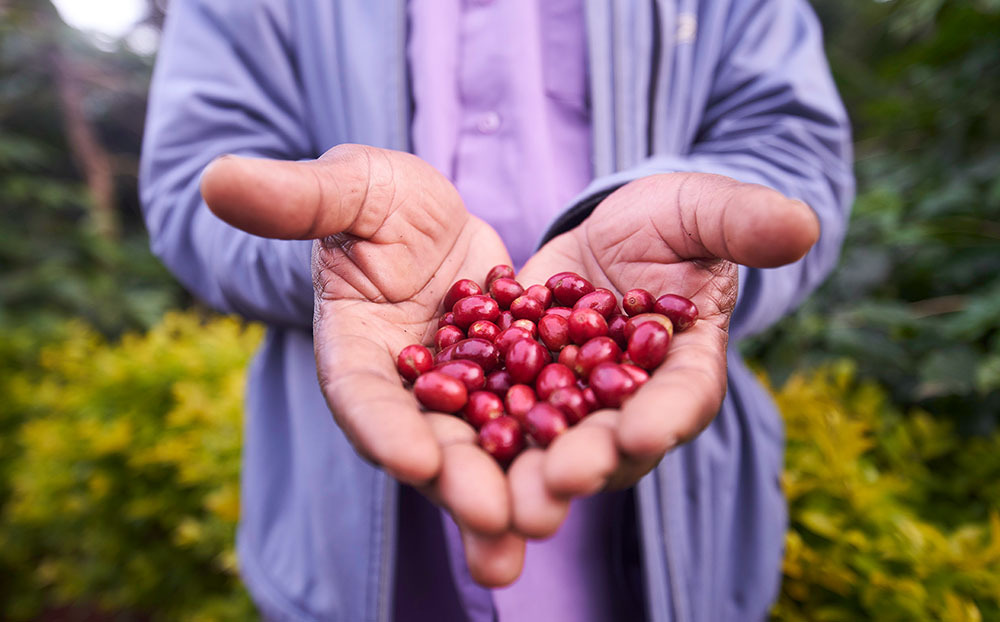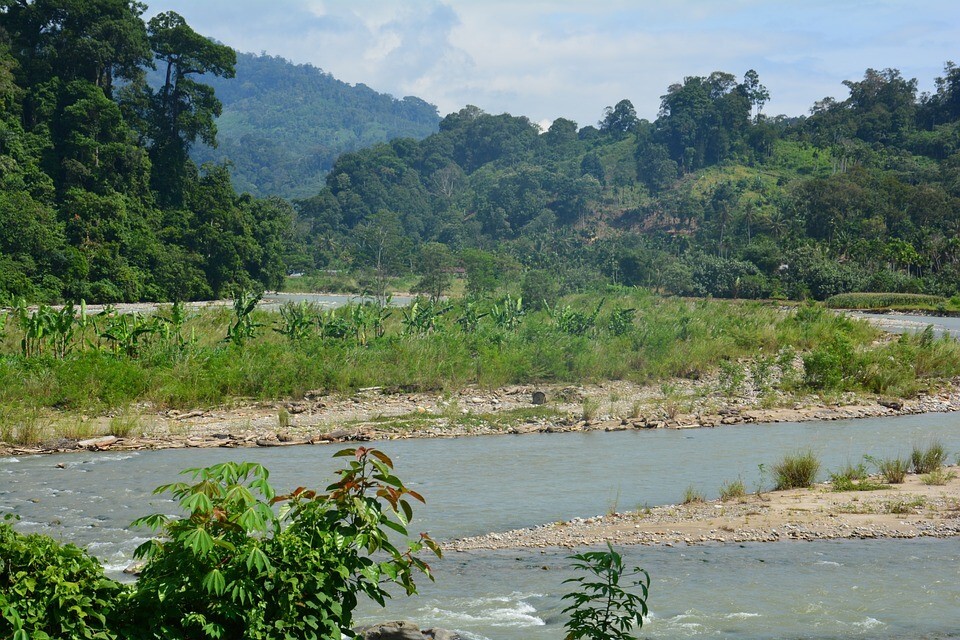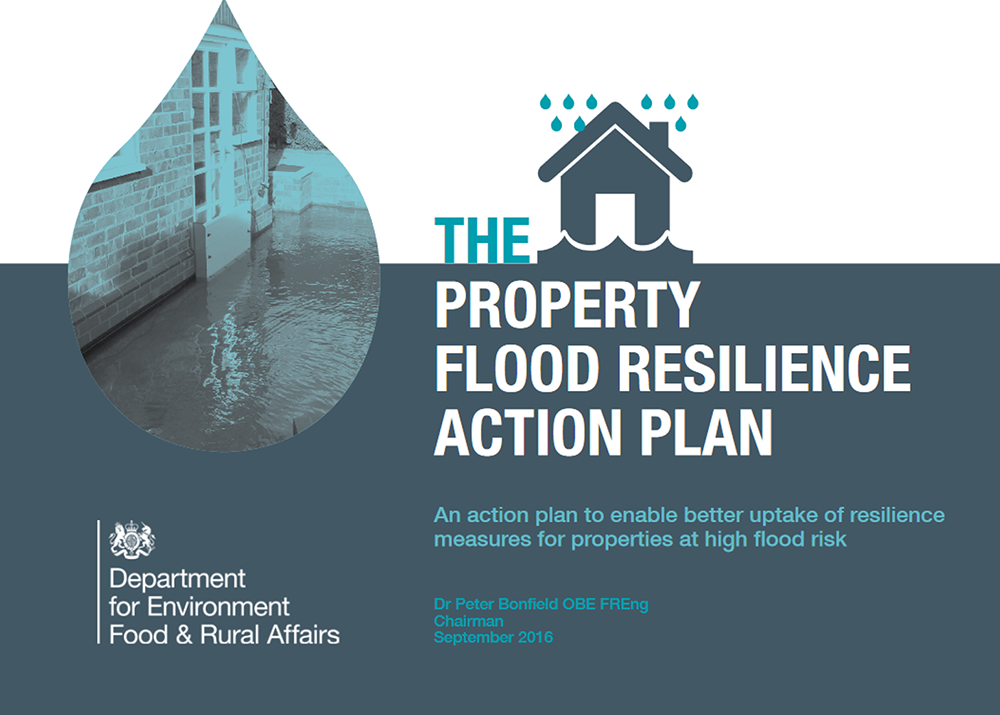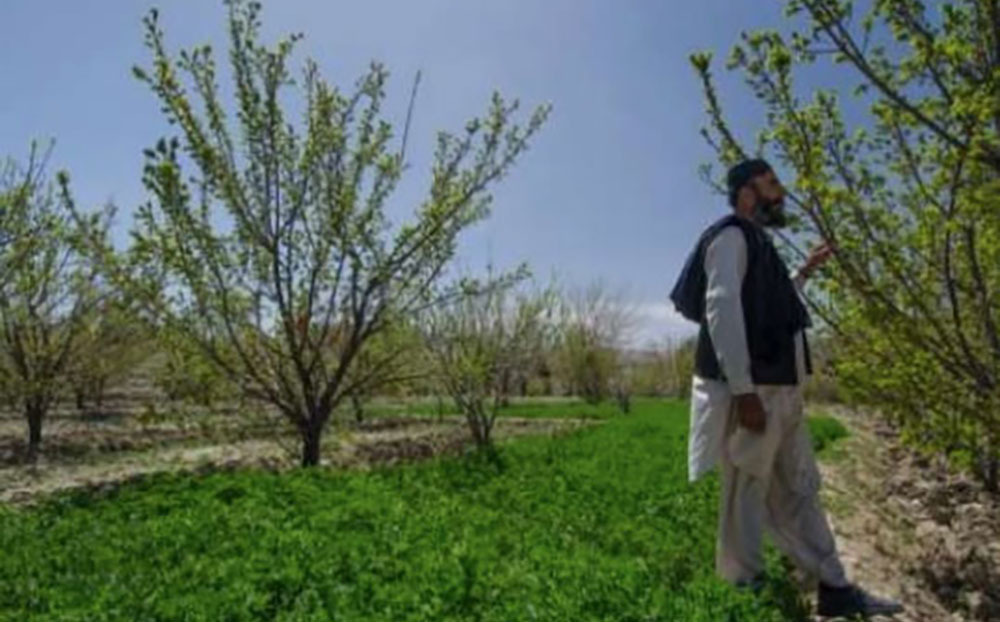
Issue
Shortage of water for livelihood and agriculture due to insufficient rainfall and unstable rivers and surface water
Solution
Stable irrigation system of “Qanat”, underground tunnels along the aquifers of the surrounding mountains
Difficulties with water supply in an arid climate
Kashan Township, Isfahan Province in the Islamic Republic of Iran is located in a climatically arid region, with an annual rainfall of only 153.1 mm, while annual evaporation exceeds 2,800 mm. The northern and northwestern parts of the province are desert areas. River and surface water levels are not stable, and local communities have been struggling to secure a steady supply of water for domestic and agricultural use.
It was under these difficult climatic conditions that the underground canal "Qanat" was developed. Qanats are tunnels dug underground along the surrounding mountain aquifers, and are an irrigation system that allows water to be extracted from various layers of the earth using only gravity. Qanats first appeared more than 2,500 years ago in western Iran, eastern Turkey and northern Iraq, and have since been built from Mesopotamia in the west to the Mediterranean coast, and south to Egypt and Arabia.
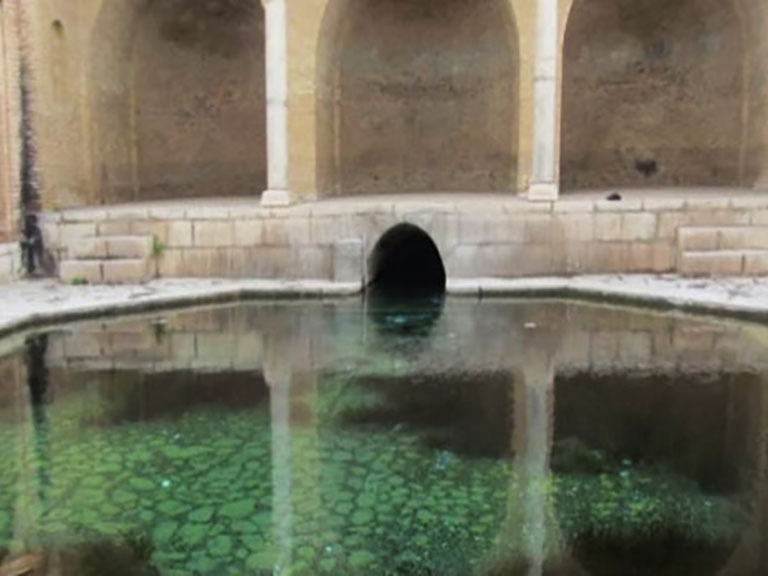
Qanats that have supported the Persian agricultural civilisation
Until about 40 years ago, most of the water supplied to the human settlements around the Central Desert of Iran came from Qanats. Qanat has contributed to the formation of the Persian agricultural civilisation under harsh climatic conditions. Even today, about 14% of Iran's agricultural production depends on water supply from Qanats and about 800,000 ha of agricultural land is irrigated by Qanat irrigation systems. The production of Iran's most important agricultural crops, such as pomegranate, pistachio and saffron, depend on this irrigation system. Rich biodiversity and genetic resources of cash crops such as cereals, pulses, vegetables, fruits, vines, olives, fruit trees, fodder crops, cotton and tobacco have also been extensively maintained and cultivated using the Qanat technology. Thus, even in areas where soil and water are scarce, the Qanat technology mastered by the local people has made it possible to create a diverse agricultural landscape. Kashan is one of the oldest human settlements in Iran, as archeological research has uncovered remains dating back 7000 years. On the other hand, the livelihoods of the people of Kashan are still largely dependent on groundwater resources and the water for agriculture in the area is provided by about 473 effective Qanats.
Ecosystem services provided by canal irrigation
There are several reasons why the Qanat irrigation system can be described as a Nature-based Solution (NbS). Firstly, the Qanat draws water from the top of the aquifer by natural gravity, which has less environmental impact on the surrounding soil than deep wells that use fossil fuels to pump water from the bottom of the aquifer. In addition, as the water flows over a long distance through the canal, suspended solids gradually settle out and the water quality is purified naturally. Using this fresh water free of salt and unwanted minerals, crops irrigated with Qanat water are of good quality and drought-resistant. Moreover, Qanats regulate the salinity of the water, thus playing an important role in preserving the quality of soil and protecting downstream farmlands. They also act as a groundwater drainage system, preventing the groundwater table from rising during flash floods, which are typical in arid regions. As such, the Qanat is an NbS that provides multiple ecosystem services beyond its mere water supply function.
Qanat water distribution management that stabilized the community
The Qanat's participatory approach to water distribution management is a good example of how a land and water use system can be carefully designed and managed by local communities to ensure the resilience and sustainability of the system over centuries. The principle of the Qanat water distribution system is that each farmer uses water according to the size of land that is cultivated. In essence, the cultivation system is so dependent on the water distribution system that every farmer cultivates only the area that can be irrigated with their share of water. As a result, all crops can be adequately irrigated. The distribution of water from generation to generation has ensured that water rights and the area under cultivation have always been in balance. This is an informal but highly respected structure, mechanism and arrangement that the community has developed over the centuries to distribute water in the Qanat, and as such it forms the basis of a fully functioning water distribution system.
Participatory region-wide agricultural decision-making
One of the very important services provided by Qanat irrigation is a participatory agricultural decision-making system for the entire region, using a holistic land and water management system. In this holistic system, the representative from the community in Qanat irrigation water management, Mirrab (water distributor of the entire Qanat), is also responsible for planning the cropping pattern. After every one or two years of cultivation, the land is left fallow. Some of the land adjacent to the crop is set aside for an orchard on alternate plots. One year the community may grow one crop, and the following year a different crop. Two or three different crops may be grown in one year if there is an adequate supply of water. Such collective farming schemes compensate for the disadvantages of having small and scattered plots of land.
Farmers in the role of Sartagh protect crop diversity by managing what is being grown where, apart from the water distribution system. This is part of their traditional knowledge they have learnt through experience, for example, that hard soils produce good quality tobacco and loose soils produce standard quality tobacco, or to distinguish between fast-growing watermelon and melon varieties.
The factors that cause the weakening and decline of agriculture are also monitored and controlled by consensus. For example, old owners go into retirement in exchange for maintaining and protecting the Qanat, distributing water or sharing cultivation with newcomers. In each plot, irrigation and cultivation are carried out by the people who own the land at the time, in turn or with the help of each other. Thus, many lessons can be learned from the intergenerational, integrated and participatory approach of all local community members to water management, land management and crop management through the Qanat irrigation system.
Ancient resource management techniques, such as Qanat, are often based on low-tech wisdom and ingenuity to make the best use of limited natural resources. Moreover, science can now prove such benefits. Further investigation could be carried out to find out if there is any "ancient wisdom" in your community that can be called NbS.
Location

